Conceived as one of the major structures on the Prussian Eastern Railway, the Old Wisla Bridge at Tczew originally consisted of six wrought iron spans. Due to Germany's invasion of Poland at the beginning World War II in 1939, only three original spans remain today. These remaining spans represent a unique technical monument of civil engineering achievements in the mid-nineteenth century.
Civil

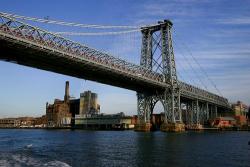
When opened in 1903, the 1,600 foot long main span of the Williamsburg Bridge was the world's longest suspension span, surpassing the nearby Brooklyn Bridge by only 4.5 feet. The Williamsburg Bridge remained the world's longest suspension bridge span for 21 years until the opening of the Bear Mountain Bridge in 1924. The Williamsburg Bridge has two unsuspended side spans of 596.5 feet, each supported from below by trussed towers, giving the bridge an overall length of 2,793 feet. The four main suspension cables are 18.75 inches in diameter and each composed of over 10,000 wires.
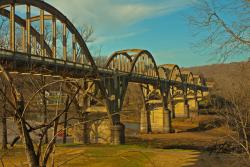
When this 1,850-foot concrete-arch highway bridge was built on the White River in a remote region of northern Arkansas - prior to the construction of upriver, flood-control dams - flash floods occurred frequently, sometimes causing the water to rise as much as one foot per hour. Construction under these conditions presented a clear danger, so project managers specified both a design and an innovative construction method appropriate to the problem of building across a perilous stretch of unpredictable river.
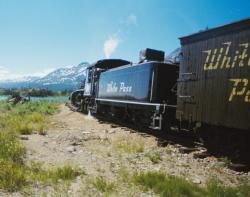
Combining British financing, American engineering, and Canadian contracting, the White Pass and Yukon was the first major civil engineering project on the continent above the 60th degree of northern latitude. Completed in 27 months using only hand tools, black powder, and regional timber, the White Pass and Yukon rises almost 2,900 feet from sea level at the port of Skagway to the White Pass summit on the U.S.-Canada border in just 20 miles, accomplishing one of the steepest climbs of any railroad in the world.
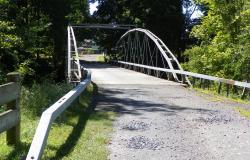
The Whipple Bowstring Truss Bridge was built from a design patented in 1841 by Squire Whipple. Whipple was the first person to understand the stresses in truss members and he developed the first theoretical formula to calculate stresses in the articulated truss. His bowstring truss was the first to use cast iron for compression and wrought iron for tension membranes.

The steel dome stretches 200 feet in diameter and rises 100 feet at its top. To accommodate thermal expansion, the inverted bowl-shaped structure originally rested on rollers that sat on the flat tops of six-story columns
There was a time when Americans from the Eastern seaboard braved long rail trips to southern Indiana in hopes that the water at the French Lick natural mineral springs could bring relief from alcoholism, pimples, gallstones and a host of other ailments and illnesses.
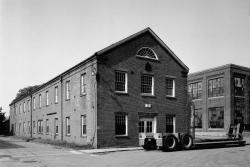
The Watertown Arsenal was the first major engineering testing laboratory in America. It was created to store and manufacture cutting-edge military technology and weaponry. The United States Army Research and Materials Laboratory continued to use the site until 1989, employing soldiers and civilians to produce and test artillery.
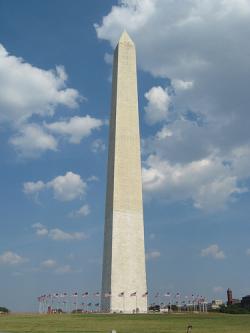
WashingtonState: DCCountry: USAWebsite: http://www.asce.org/Project/Washington-Monument/Creator: Casey, Thomas Lincoln
Upon its dedication in 1885, the Washington Monument was the tallest structure in the world. Begun in 1848 to honor George Washington, the structure wasn't completed for over 36 years. Construction and financing problems slowed progress and the Civil War halted it completely.
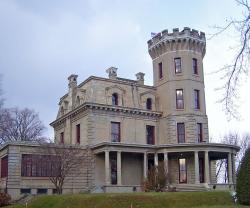
BrookRyeState: NYCountry: USAWebsite: http://www.asce.org/Project/Ward-House/Creator: Ward, William , Mook, Robert
It is a large, imposing structure (over a dozen rooms and spacious halls) dominated by a four-story octagonal tower at one corner and a second shorter square tower at another corner containing tanks for potable and fire-fighting water supply.
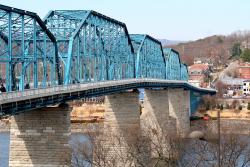
The structure has two segments: an East Channel bridge consisting of four 175-foot spans and three 240-foot spans crossing from Harrisburg to City Island; and a West Channel bridge, consisting of seven 175-foot spans crossing from City Island to Wormleysburg.
With 15 truss spans totaling 2,820 feet, the Walnut Street Bridge is the finest and largest surviving example of the standardized Phoenix wrought-iron truss bridges produced from 1884 to 1923.
Innovations
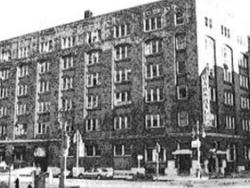
Designed by Claude A. P. Turner, a pioneer of reinforced concrete construction, the Marshall Building was constructed originally in 1906 as a five-story building. In 1911 the sixth floor of the building was added as per Turner's original design. This building is the oldest extant example of…
Read More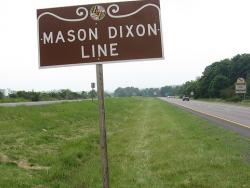
The granite milestones marking the Mason-Dixon Line bear crests from the two parties involved in the land-grant dispute, the families of William Penn and Charles Calvert (also known as Lord Baltimore).
What is now generally referred to as the Mason-Dixon Line was established by the…
Read More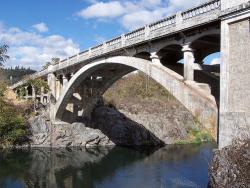
The Rogue River Bridge was the most advanced concrete bridge in America when it was built. Distinguished bridge engineer Conde McCullough employed the techniques of Frenchman Eugene Freyssinet to create thin, graceful concrete arches for this seven-span structure.
Pre-compression of the…
Read More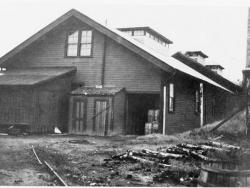
The city of Shreveport could not justify the cost of building a water distribution system solely for the purpose of supplying potable water. It was a series of disastrous fires in the 1880s that galvanized support for a pumping facility that would provide ample water for firefighting.
…
Read MoreWhile the Erie Canal has become well-known in the annals of American history, the Middlesex Canal, built two decades earlier and a model for canal engineers throughout young America, has only recently become recognized for its important achievements. Extending 27 miles northeast from Boston…
Read More
In 1794, Congress authorized and President Thomas Jefferson signed into law the raising of a Corps of Artillerists and Engineers (now the United States Army Corps of Engineers) to be educated and stationed at the newly created United States Military Academy. The U.S. Military Academy was the…
Read More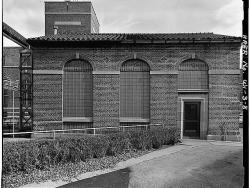
This was America's first large-scale activated sludge plant. The successful operation of Milwaukee's sewage treatment plant led the way for many other American municipalities to adopt its methods of efficient environmental recycling.
Prior to 1925, sewage and industrial waste from the…
Read More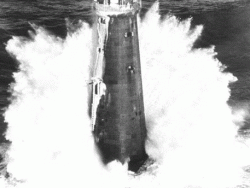
Minot's Ledge is a wave-swept rock formation in a rocky area of ocean about a mile off the Cohasset shore near Boston. Numerous serious shipwrecks prompted the government to erect a beacon there, and construction began in the summer of 1847.
The light, constructed on tall iron legs…
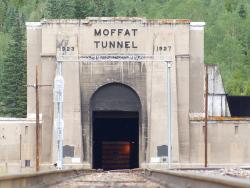
Known as "the highest and lowest holing in history," the tunnel bored through the Rockies at an elevation of 9,200 feet, 2,800 feet below the surface. Eight hundred men worked around the clock for 3 1/2 years, moving 3 billion pounds of rock.
Three thousand feet under the Continental…
Read More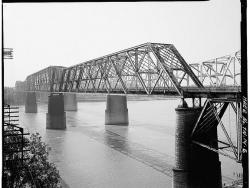
The Memphis Bridge (now called the Frisco Bridge) comprises three spans across the Mississippi River. With a main span measuring over 790 feet, it was one of the longest railroad bridges in the world upon completion. The renowned George Morison, after whom the bridge is unofficially named,…
Read More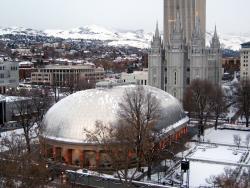
Just 20 years after settling the uninhabited Salt Lake valley, Brigham Young and his Mormon followers completed one of the nation's most impressive public structures. The 9,000-seat Mormon Tabernacle boasts a clear span roof measuring 150 feet by 250 feet, its timber trusses joined with wooden…
Read More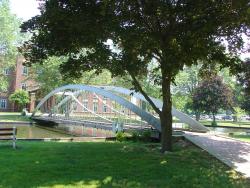
Designed, patented, and built by Thomas W.H. Moseley, this arched 96-foot span bridge preceded by years the standard use of wrought iron for bridges. For the first time in the United States, Moseley incorporated the use of riveted wrought-iron plates for the triangular-shaped top chord.
…
Read More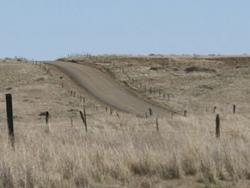
The Mullan Road was designed to facilitate the movement of troops and supplies across the Rocky Mountains between the Missouri River basin in the Great Plains and the Columbia River Basin at the Columbia Plateau during times of Indian hostilities. But because peace was reached with the Northwest…
Read More
The National Road was the first interstate highway in the United States, and the first roadway to be financed with federal money. Authorized by Congress during the administration of Thomas Jefferson in 1806, the road was built over time and in sections from Cumberland, Maryland, westward through…
Read More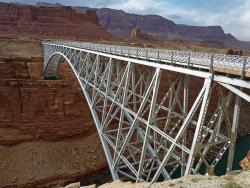
Navajo Bridge spans Marble Canyon, 470 feet above the Colorado River in Grand Canyon National Park. It was considered the highest steel arch bridge in America when completed.
The Navajo Bridge (also known as the Grand Canyon Bridge) was built in 1929 by the Arizona Highway Department and…
Read More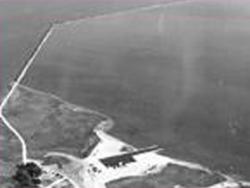
In 1794, the Delaware legislature authorized a lottery to fund the erection of ice piers in the harbor at New Castle. The ice harbor was designed to protect anchored ships from storms and ice. At the time, New Castle served as the principal winter port for ships from the Port of Philadelphia…
Read More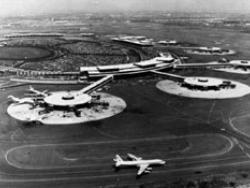
In May 1927, the same month of Charles A. Lindbergh's famous transatlantic flight from New York to Paris, a fact-finding commission appointed by the U.S. Secretary of Commerce concluded that Newark would be the ideal location for an airfield to serve the greater New York/New Jersey metropolitan…
Read More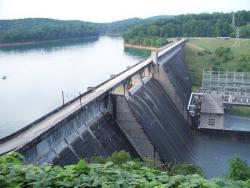
Norris Dam impounds the Clinch River, a mountain tributary of the Tennessee River. The facility stands as a tribute and symbol of the birth of the Tennessee Valley Authority (TVA). Given broad jurisdiction over resource development in the watershed (a 40,000-square-mile basin comprising parts of…
Read More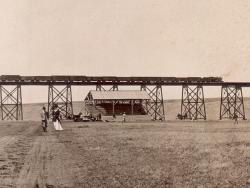
The Northern Pacific High Line Bridge No. 64, built between 1907 and 1908, has continued to perform yeoman service in the uninterrupted flow of the Nation's commerce. Nearly, 100 years after this bridge officially opened, it still carries 125-ton car unit coal trains, double stack container…
Read More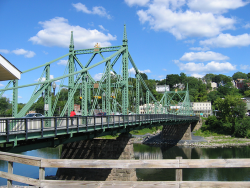
The crossing of the Delaware River at Easton, Pennsylvania, provided a central link in travel from the northeastern seaboard to America's inland territories throughout the 18th and early 19th centuries. From 1806 to the mid-1890s, travelers used a landmark wooden structure built by noted bridge-…
Read More

